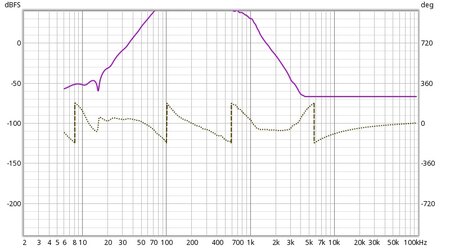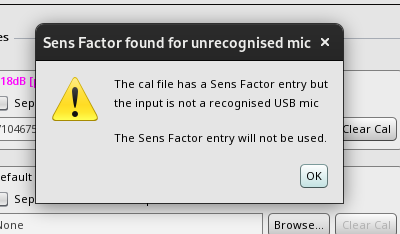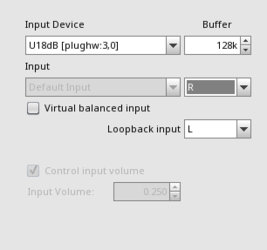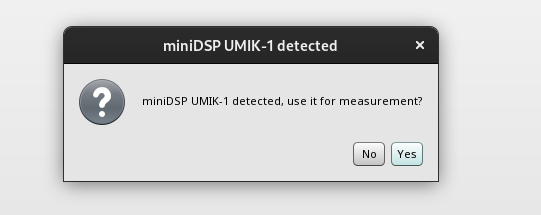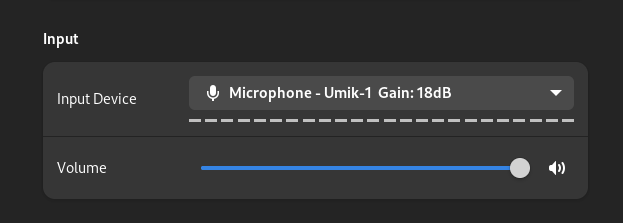The impulse response export is correctly normalised, the largest (magnitude) value in it is -1.0. As this is a low bandwidth signal the corresponding frequency response has a high amplitude. The arithmetic is correct, given the response (in dBFS) is between 53 and 33 dB below the target. I'll mull over whether I can change the way the division works to take into account the relative SPL of the measurements and scale the result IR accordingly rather than just adjusting the SPL offset figure for the result as it does currently. REW doesn't provide a control to scale the IR data, doesn't CamillaDSP have a way to adjust the gain of the IR?
REW will not recognise the mic if neither the input device name, input name nor the source description of the input contain a recognised mic name. On Linux device names are not particularly helpful for that as they are so abbreviated, so the source description of the input is used, but you don't appear to have selected an input for the mic. Does Fedora not offer input choices?
I can fiddle around with the mic and the IDs to likely have REW find it, I will work that out. It does see it in some ways, and it works just fine it seems. I have added some pictures so you can see what is going on, but it is no biggie at all.
" As this is a low bandwidth signal the corresponding frequency response has a high amplitude." That is beyond my scope of understanding, I do not see the reasoning for a high amplitude, when having low bandwidth. I will not challenge that statement though

I can adjust the gain of the filter in CamillaDSP, either as a built-in preamp gain on that particular channel, or by adding a "gain" filter manually. My problem is that I worry about dynamic compression of the music, because I have to apply something like -60dB gain in some of them, to have the IR filters run at below 0 dbfs to avoid digital clipping. -60dB is 10bit lost? It might be okay, I am not sure on the inner workings of the DSP when doing so. If it is taking the bits purely from the internal 64 bit float it is operating in, I guess it is fine. If it affects the music bit depth, not so much.
"The arithmetic is correct, given the response (in dBFS) is between 53 and 33 dB below the target." I tried minimizing that distance, as I thought that was the culprit, but did not find any way of doing so. I initially tried lowering the target curve down to the response, but target curves will always stay at around 0 dbfs it seems, as adjustments are affecting SPL.
I tried importing the IR into Rephase, to have it somehow adjust the dbfs of the measurement (and then export to IR again), but Rephase do not export the measurement, only any adjustments made in rephase itself.
If adding -60dB gain is all good and we have plenty of bits to spare, when running inside the DSP engine, I can totally live with that route. I am just not sure if it affects the bit depth of the music signal or not.
Edit: I think it would be nice to have some option when doing the arithmetics in REW as you mention, as I guess those operations, are mostly used by people doing filters (and they would want those at below 0 dbfs for ease of use).







